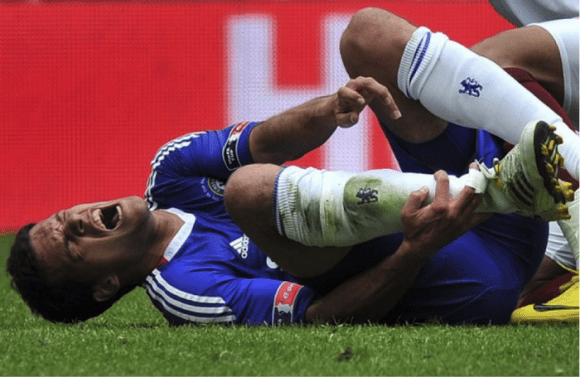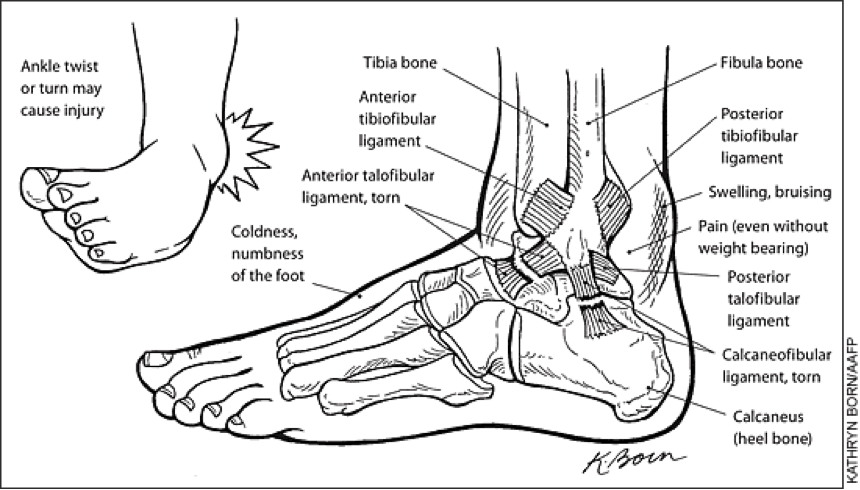
With footy, netball, basketball and soccer season well and truly under way, a rolled ankle is a painful and debilitating injury that can have you sidelined for weeks to months depending on its severity. If you have rolled your ankle make sure you get it seen to, as a poorly healed ankle injury can lead to long term pain, discomfort and disability. A poorly healed ankle injury can lead to long term pain, discomfort and disability.
Ankle sprains are one of the most common injuries seen at both our Penrith and Jordan Springs practices. A sprain is defined as the tearing of the ligaments that connect bones in the ankle and stabilise the joint. It sounds awful and the acute ankle is very painful – you won’t forget the sensation in a hurry.
Following an ankle sprain, the ankle joint may become unstable and take a long time to recover. The most common ankle sprain is an inversion injury, where the foot rolls inwards. This accounts for 80% of all ankle injuries. It usually results in damage to the anterior talofibular ligament (ATFL) the calcaneofibular ligament (CFL) and at times the posterior talofibular ligament (PTFL).

Ankle anatomy and structures that may be injuried in common ankle injuries.
Rolling the ankle outwards or an eversion injury accounts for less than 20% of injuries and can cause damage to the deltoid ligament or the navicular bone.
Other injuries that can occur as a result of a rolled ankle include a fracture of the 5th meta-tarsal, a medial or lateral malleolus fracture, a cuboid or navicular fracture and damage to the talar-dome. High ankle sprains such as syndesmosis injuries can also take place. All these injuries require further investigation such as X-Rays and/or MRI’s and may require treatment with a walking boot/ CAM boot or a specialist consult.
The most common symptoms of a rolled ankle are:
Early intervention can limit the time spent on the side-lines and a structured rehabilitation program supervised by an experienced Physiotherapist can address any instability issues to reduce to risk of re-aggravation.
A treatment program supervised by your Physiotherapist will ensure that you don’t return until you are ready to and all issues are addressed. This might including bracing and strapping following your return to sport and specifically designed dynamic stability program to assist in the unique requirements of your sport.
If you’ve injured your ankle make an appointment to see one of our expert Physiotherapists who will get you on the road to recovery.

By Jude Holroyd – Principal Physiotherapist at The Healthy Body Company Jordan Springs